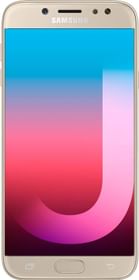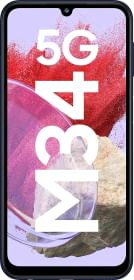Samsung has now brought out two new smartphones, namely the Galaxy J7 Pro and Galaxy J7 Max, thereby increasing the ever-expanding tally of its ‘Galaxy J’ range of smartphones. Each of the of two is a mid-range outing by the company, and are the first in the budget category to come with Samsung’s mobile payment service(s).
Also Read: Samsung Pay Mini Arrives In India – All That You Should Know
Here are the specifications that the two come with:
Samsung Galaxy J7 Pro and Galaxy J7 Max Specs
| Model | Samsung Galaxy J7 Pro | Samsung Galaxy J7 Max |
| Display | 5.5-inch, Full HD, SAMOLED, 2.5D Glass | 5.7-Inch, Full HD, IPS LCD display, 2.5D Glass |
| Processor | 1.6GHz Exynos 7870 | Helio P20 |
| RAM | 3GB | 4GB |
| Internal Storage | 64GB, expandable up to 128GB | 32GB,expandable up to 128GB, Dedicated slot |
| Software | Android 7.1.1 Nougat | Android Nougat 7.0 |
| Primary Camera | 13MP (main), PDAF, f/1.7 aperture Dual Tone LED Flash | 13MP rear camera, f/1.7 aperture, dual tone LED flash |
| Secondary Camera | 13MP front-facing camera, f/1.9 aperture | 13MP selfie camera, f/1.9 aperture |
| Dimensions | – | – |
| Battery | 3600mAh | 3,300 mAh |
| Others | 4G LTE, WiFi, Bluetooth 4.1, GPS, USB OTG, NFC, 3.5mm audio jack | 4G VoLTE, WiFi, Bluetooth 4.1, GPS, 3.5mm audio jack, USB OTG |
| Price | Rs. 20,900 | Rs. 17,900 |
Although both the phones were outed at the same event, there’s still a lot that is different between the two of them. Here’s a detailed breakdown of the two, so that you know what each one has to offer:
Design
Both the phones from Samsung prominently feature metal in their design, and are secured on the front with the help of a 2.5D curved glass.
The J7 Pro has been fashioned entirely from metal, with just a dash of plastic in the form of the U-shaped antenna bands running across the top and bottom of the back panel. The use of these bands, however, does not deal any damage to the design of the phone, and instead adds to it.

For the J7 Pro, Samsung has gone ahead with the metal back, which is disturbed by specks of plastic on the top and bottom of the rear panel, which again isn’t bad at all.
Stature-wise, the J7 Max has a height advantage, coming in with a 5.7-inch display, while the J7 Pro, having a 5.5-inch display, is, obviously, a tad compact, which also makes it more manageable.
Display and Build
The display is something where the difference between the two phones shows up quite clearly, even though both of them have a full HD resolution.
Also Read: Samsung Galaxy A5 (2017) Review – Flagship Grade Experience In A Compact Body

The J7 Pro has the upper hand here, courtesy the Super AMOLED panel that Samsung has provided for it, while the J7 Max stays content with the standard IPS LCD panel.
The SAMOLED display takes the cake here, as it shows more vibrancy in the colors with the blacks also appearing deeper although the IPS LCD panel on J7 Max with Full HD resolution isn’t entirely bad at all.
Performance and Software
The make of the processors used in the two phones also differs as one employs the company’s very own produce, while the other one takes this bit of machinery from another company.
The J7 Pro makes use of Samsung’s indigenous Exynos 7870 (1.6GHz, octa-core) SoC, while for the J7 Max, the company has gone ahead with an Helio P20 chipset. You’ll have to wait for the full review of the phones to gauge the efficiency of the chipsets.

A 3GB RAM supports the J7 Pro Exynos processor, while a tad more 4GB RAM is to put to use in the J7 Max. The J7 Pro (64GB) is ahead in the ROM department when compared to the J7 Max’s 32GB ROM.
For the software bit, there’s Android Nougat-based TouchWiz UI placed inside both of them.

Also Read: Xiaomi Redmi 4 (2GB RAM) FAQ – All Questions Answered
The phones are also the first in the budget range to come featuring the Samsung Pay app for (online/offline) transactions. While the J7 Pro has the full, original Samsung Pay app that we last saw in the Galaxy S8 family, the J7 Max has the Samsung Pay Mini service, that also made its debut in the country with the phone (more on the Samsung Pay Mini here).
Camera and Battery
Optically, the matter is evenly spread between the two, as the same 13MP set of cameras (both front and back) have been put into the phones, replete with the exact same features.
For the back, the specifications for the 13MP camera include a f/1.7 aperture, autofocus, LED flash and 1080p (@30fps) video recording capabilities.
Up front, the users will have features like f/1.9 aperture and LED flash with the 13MP cameras.

A welcome addition to the features in the optics is the one that lets the users upload pictures directly to social media straight from the camera app (so, that will save a lot of time and hassle).
Another difference arises when we compare the batteries of the duo, as one (J7 Pro) has a 3,600mAh power unit, while the other one (J7 Max) has a 3,300mAh one.

Also Read: Phone Comparison – Nokia 6 Vs Moto G5 Plus
Who should buy the Galaxy J7 Pro?
All those, who prioritize premium looks, full metal feel, and display quality, combined with some powerful optics looking for a good option in the 20K category. Also, Samsung Pay at this price is an added bonus.
Who should buy the Galaxy J7 Max?
Those who are looking for a phablet/big-sized device having above average specifications, and tier-1 branding and don’t want to stretch their budget to 21K.
Key Highlights
- J7 Max will entice people looking for big display phablets
- J7 Pro benefits from a better quality AMOLED Panel.
- J7 Pro flaunts full metal design, J7 Max is Metal + Plastic
- J7 Max has more RAM, J7 Pro has more storage
- Both phones have similar design on the front, and the same Nougat based software
- J7 Pro also has full-fledged Samsung Pay.
































